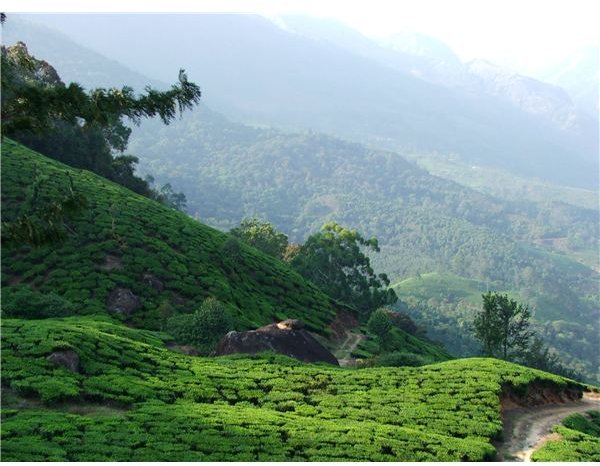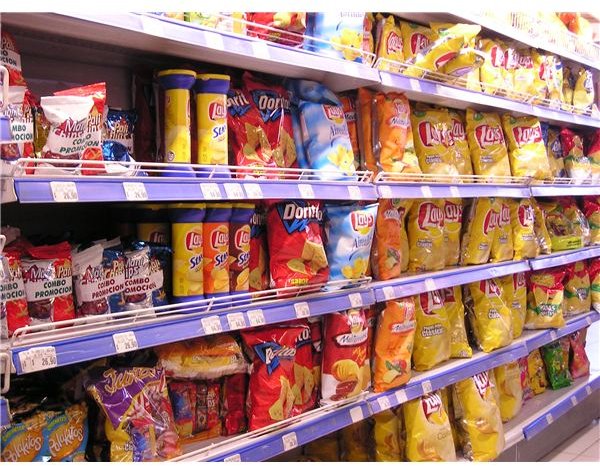Do Similarities Between Fair and Free Trade Outweigh the Differences?
The Aims of Free Trade
The concept of free trade refers to a situation where international trade may be carried on between countries without restrictions such as high customs duties on imports or restricted quotas for imports of certain types of goods. Free trade enables countries to specialize in producing goods and services they can produce efficiently, while purchasing other goods from countries that produce those goods more efficiently.
The theory of comparative advantage explains that each country can benefit from specializing in the production of goods for which its opportunity cost is low compared to other countries. If each country specializes in this way, the total global output will increase as every country is using its resources in the most efficient way and thereby maximizing its productivity.
Free trade enables domestic and foreign firms in a country to compete in the local market on equal terms. This encourages innovation and greater efficiency by local firms who need to remain competitive internationally. It also widens the choice for consumers who may choose to buy imported products.
While free trade may help to maximize global income, it does not necessarily bring equal benefits to all countries, and it can give rise to large differences in wealth between countries and within the populations of individual countries. Some countries may be largely agricultural and their exports will often consist of a few categories of agricultural product. They are likely to be much more at the mercy of price fluctuations than industrialized countries with a sophisticated range of goods and services to offer.
Certain countries may rely on mining certain metals for their export income, and the price fluctuations on the commodity markets may leave them with a very uneven income from one year to the next. Within a particular country, a small elite group may be growing rich from international trading and the benefits may not trickle down to the whole population.
The Concept of Fair Trade

Although there are some similarities between fair and free trade, the concept of fair trade involves helping producers in developing countries to achieve better trading conditions and sustainable production. This is achieved mainly by partnership between fair trade organizations in developed countries and producer groups in developing countries to work out a minimum sustainable price for the goods.
Product certification signals to consumers in developed countries that the goods have been produced under fair trade terms. A sustainable price would take into account the need to achieve defined social and environmental standards including a fair wage for the workers who produce the goods. Producer groups may also receive a fair trade premium to spend on local community projects.
A product certification body in the developed world certifies the products as fair trade products and retailers in developed countries then sell these products as fair trade products. Consumers may purchase the products with the assurance that they have been produced under conditions of fair trade, and consumers may be prepared to pay a higher price in the knowledge that a fair price has been paid to the producers.
The types of products normally sold under a fair trade label are mainly agricultural products. These are mostly food items but include some non-food products such as cotton, beauty products, ornamental plants or even sports balls. Many consumers will be most familiar with fair trade coffee, but other food products sold under fair trade labels include bananas, honey, spices, tea, sugar and rice.
Criticisms of Fair Trade

Critics of fair trade take the line that an artificially high price is set for the goods and that this encourages inefficient production. Where the minimum price agreed upon with the fair trade producer group is higher than the market price set by supply and demand, the result is likely to be that the existing firms in the market produce more. New firms also come into the market to take advantage of the higher price, resulting in an increase in supply that may harm other producers who are not part of the fair trade arrangements.
Where a minimum price is set for some producers, this discourages competition and innovation and may therefore lead over time to inefficient production. Some critics see the price paid for fair trade goods as a kind of subsidy, which distorts competition in the market.
Another concern with regard to fair trade products is that they are generally overseas agricultural produce and these products may divert trade from the local agricultural producers. Buying local produce rather than fair trade imports may be seen as an advantage by people concerned with the environment and worried about the pollution and greenhouse gases related to the number of miles goods are transported. In many developed countries, however, most of the products marketed under a fair trade label such as tea, coffee or rice are not grown by local producers and there is no direct competition with local agricultural businesses.
Free Trade and Fair Trade
There are similarities between fair and free trade in that both have the objective of increasing wealth globally. An advocate of free trade would, for instance, argue against the protectionist measures and subsidies with which certain industrialized countries and trading blocs protect their agricultural producers against competition from agricultural imports from developing countries. On the other hand fair trade, unlike free trade, could be in favor of maintaining tariff barriers to protect producers in small countries who might otherwise have great difficulty in competing with multinational enterprises in international markets.
Proponents of fair trade would point out that the general increase in global wealth brought about by free trade goes mainly to those countries and people who already have economic muscle and strong bargaining power. Free trade may increase the existing disparities of income.
Many advocates of free trade would acknowledge this problem but doubt the ability of fair trade structures to help the situation owing to problems such as inefficiency resulting from the artificial minimum price. Currently, fair trade products form a very small though growing proportion of international trade and it is, therefore, difficult to assess the real benefits except in particular localities and communities where producer groups are located.
The difference between free and fair trade therefore lies in their view of the ability of the invisible hand of the free market to arrive at the optimum conditions for producers and consumers in all parts of the world. Advocates of free trade do not necessarily believe that free market conditions produce the perfect solution, but they consider that the results produced by free trade are preferable to the alternatives.
Where advocates of fair trade attempt to correct the results of the free market by means of intervention to set prices for some producer groups, free traders would see this as a project that cannot succeed. In their view, setting an artificial price floor that is higher than the equilibrium price set by supply and demand cannot solve the problems of the producers because any price floor has a complex set of consequences that negate the apparent benefits to the producers.
The basic problem as they see it is that some producer groups may be helped by fair trade, but only at the expense of producers generally who will see conditions worsen because of the overproduction resulting from the artificial price. The price of the commodities for producers who are not part of the fair trade arrangements is likely to be adversely affected. In their opinion, fair trade cannot displace the mechanism of supply and demand. Free traders, while recognizing that free trade does not always lead to justice, would argue that it leads to the most rational price and levels of production.
The differences between fair and free trade and their effects on producers cannot be tested under laboratory conditions, though useful information may be gathered from statistical surveys. The outcomes of both strategies in the real world are complex and the extent of their effects is not always obvious. The effect of fair trade on the wider economy of developing countries is likely to remain a disputed topic into the future.
References
-
Image credits:
Alvimann on morguefile under morgueFile Free License
richcd on morguefile under morgueFile Free License
nibujohn on morguefile under morgueFile Free License
